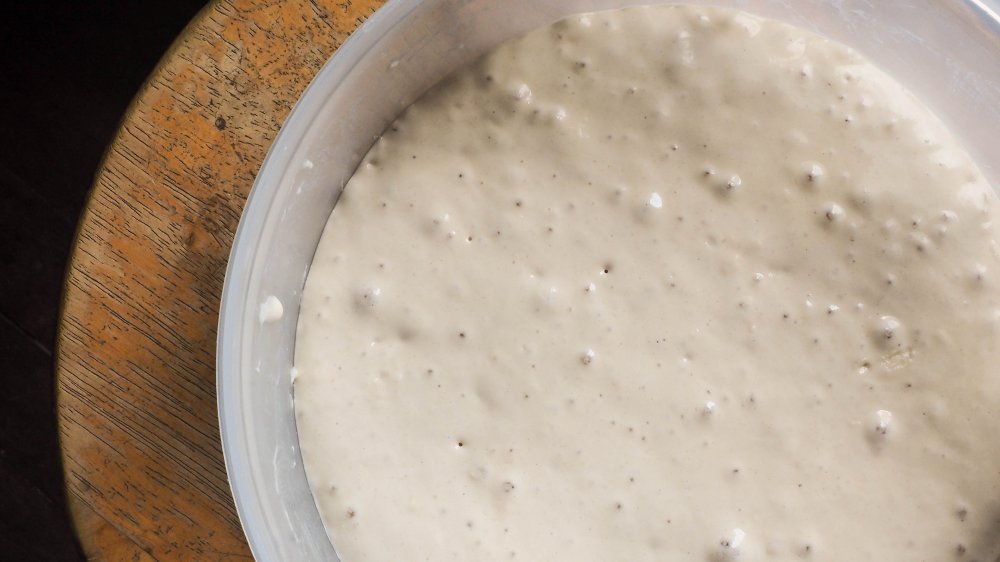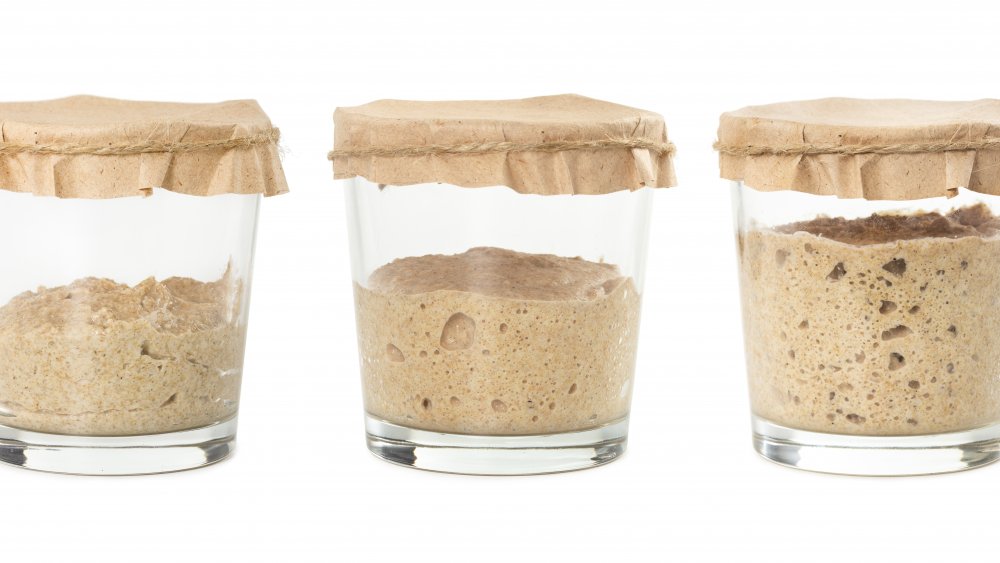Everything You Need To Know Before Making A Sourdough Starter
Baking your own sourdough bread is a time consuming (but ultimately rewarding) process. While bread can be made from just a few simple ingredients, making sourdough from scratch is a little more complicated than just adding yeast and flour to water.
To start, you need something called a sourdough starter. While most breads use store-bought yeast, that will not do for sourdough, according to How Stuff Works. They claim sourdough bread can only be made using wild yeast, which is produced by harvesting yeast from flour. While you can purchase a starter from places like online marketplace Etsy or popular brand King Arthur Flour's web store, most people choose to get one from a friend or make their own at home.
Taste describes a sourdough starter as a mix of flour and water that has absorbed yeast and bacteria from the air. This starts a fermentation that gives sourdough its signature tangy flavor. All breads used to be made using wild yeast before the introduction of commercial yeast, according to The Kitchn. Fleischmann's claim to be the first producers of commercial yeast, when the proprietors traveled from then Austria-Hungary to open a plant in Cincinnati, Ohio in 1868. The brothers produced the first compressed yeast cake, which is still available for purchase at most U.S. grocery stores today. The Kitchn states that while wild yeast is finicky and can be difficult to work with, when it comes to sourdough, there is no alternative.
What you need to make a sourdough starter
Delish gives a rundown on the basics of making your own sourdough starter from scratch. They claim you should begin with a blend of flours, including one whole wheat kind, which naturally contains more wild yeast than processed white flours. Make sure to have a clean container (a glass jar is best if available, but anything will do) and filtered water if your tap water is chemically treated.
They assert that how quickly your starter will grow is dependent on a variety of factors, one of which is the temperature of the room you keep it in. Starters grow slower in cold temperatures and faster in hot temperatures, but you don't want it too hot. The ideal environment for your starter to live in is between 75 and 80 degrees and out of direct sunlight.
After your starter is going strong and you have been allowing it to ferment and have been feeding it for a few days, you can begin to do the "drop test," according to Food52. This simply means taking a chunk of your starter and dropping it into water. If the starter floats, it's ready to bake! If it sinks, keep on feeding and try again in a few days. Once it passes the test you can keep feeding it daily if you're keeping it at room temperature, or you can refrigerate it and reduce feedings to weekly.

